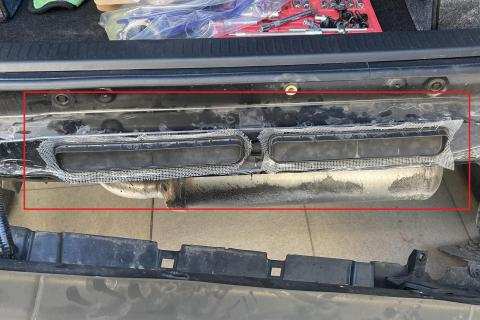Table of Contents
ToggleProtecting Your Car from Rodent Damage
When it comes to vehicle maintenance, one of the less thought-of issues is the risk of rodents, particularly rats, damaging important components of your car. Many car owners experience this unfortunate situation, especially if their car is parked in areas where these pests are common. This guide will explore some practical steps to protect your car from potential rodent infestation, based largely on one enthusiast’s experience with their Ford Figo.
Understanding the Problem
Why Rats Cause Damage
Rats are notorious for seeking shelter and food. Cars, especially those parked in rural areas or near fields, can attract these pests. They often target wires, rubber parts, and essential components like air filters. Damage done by rats can lead to costly repairs, so taking preventive measures is crucial.
Key Areas of Concern
To protect your vehicle, it’s important to understand where rats can gain access. Here are two common areas where rats can enter your car:
Front AC Cowl:
- This is where fresh air enters for the air conditioning system.
- If the intake is not properly secured, it becomes a potential entry point for rodents.
- Rear Vents Behind the Bumper:
- These vents allow air pressure to be released when doors are closed.
- Unsecured flaps can give rats access to your vehicle’s interior.
Protection Steps
1. Securing the Front AC Cowl
To prevent rats from entering through the front AC cowl, follow these steps:
Remove the Wipers:
- Carefully take off the rubber covers and unscrew the nuts. Gently shake to remove the wipers from the pivot points.
Take Off the Cross Member Panel:
- Open the hood and locate five clips. Use a flathead screwdriver to pop them out. Remove the wiper washer pipe to free the panel.
Access the Plastic Cover Inside:
- There are usually seven clips to pop open. Once done, you can lift the cover away.
Install Metal Mesh:
- Measure the air intake opening and cut a piece of metal mesh slightly larger than the opening. You can either screw it into place or use double-sided tape for secure attachment. Using strong adhesive is suggested for durability.
- Damp the Panel:
- Before reassembly, applying damping sheets will help eliminate additional noise while securing the mesh.
2. Securing the Rear Vents Behind the Bumper
To prevent rodent access through the rear vents, follow these steps:
Remove the Bumper:
- This may involve removing several clips and unscrewing bolts that hold the bumper in place.
Detach Pressure Release Flaps:
- After the bumper is loosened, carefully twist and remove the flaps to expose the vents.
Size the Rat Mesh Correctly:
- Cut the mesh to size so it fits securely when reassembling the vents.
- Reattach the Bumper:
- Once the mesh is in place, reattach the bumper carefully, ensuring all clips and screws are secured.
Protecting the Air Filter
One of the most vulnerable areas is the air filter itself. Here’s how to secure it effectively:
Open the Hood:
- Locate the air intake opening for the engine on the driver’s side.
Unscrew the Bolts:
- Remove the bolts holding the air intake in place.
- Attach Metal Mesh:
- Cut the metal mesh accordingly so it fits tightly. Using strong adhesive solutions like zip ties can provide additional security without using screws or adhesives that could cause damage.
Additional Tips
Besides the mesh installations, consider these extra preventive measures:
Ultrasonic Pest Repeller:
- Devices like CarCat use ultrasonic sounds to deter rodents. Although they can be a bit pricey, they could significantly reduce rodent activity around your vehicle.
- Avoid Using Sensitive Adhesives:
- Some tapes may not adhere well in outdoor conditions. Instead, choose durable options specifically designed for outdoor use.
Conclusion
Taking steps to protect your vehicle from rodent damage can save you from costly repairs in the long run. By securing potential entry points with metal mesh, applying damping sheets, and possibly investing in pest deterrent devices, you can significantly reduce the risk of infestations. If you experience any issues or have questions about car maintenance, don’t hesitate to ask for advice or share your tips with fellow enthusiasts.



